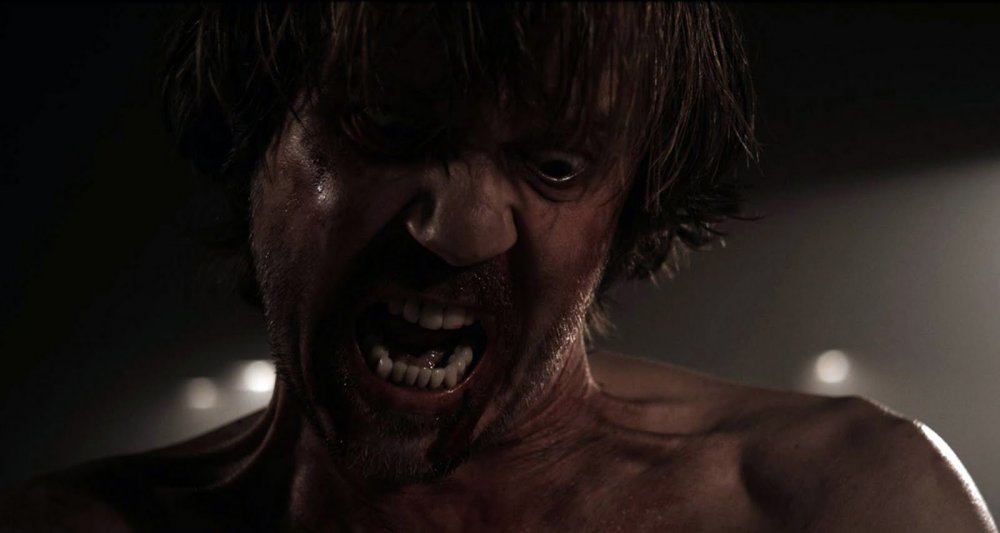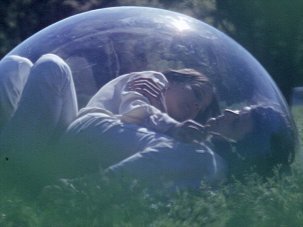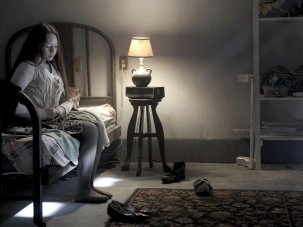Web exclusive

49 cuts: Srdjan Spasojevic’s A Serbian Film (2010)
Despite a dramatic surge in horror releases over the past few years, and the emergence of ‘torture porn’ as a mainstream genre, it’s been a while since the snip-snip-snip of the censor’s scissorhands has struck fear into the hearts of fans.
|
London, UK | September 2010 |
Until this year’s FrightFest, that is, where a remake of the infamous I Spit on Your Grave was shown with 43 seconds gouged out, and one of the festival’s showcase titles, Srdjan Spasojevic’s A Serbian Film, was withdrawn completely after the BBFC demanded 49 individual cuts totalling 3 minutes and 48 seconds.
Nobody can be surprised by the BBFC’s decision to mutilate Spasojevic’s debut, but by censoring the film, and diminishing its visceral impact, the Board could be accused of the same cultural hypocrisy to which Spasojevic is trying to draw attention. During the Bosnian conflict thousands of ordinary people experienced horrors like those on display in the film, while European news agencies largely averted their eyes. Is it right for us to do so again?
There’s no denying that A Serbian Film is extremely unpleasant – it’s meant to be – but it’s also a slickly-produced, relatively sophisticated film whose violence is unambiguously degrading to all parties concerned and hammers home a clear message. As porn torture, rather than torture porn, it’s a film that extremophiles need to assess for themselves, and one that may cause some of them to reconsider their own enthusiasms. Meanwhile, on a pragmatic level, censorship will boost the film’s notoriety but wreak havoc on its chances of making money in regions where it is cut: no transgressive film fiend wants to see a neutered film, and every one knows where they can find intact copies.
FrightFest‘s run in with the censors was particularly ironic given that one of this year’s surprise highlights was Video Nasties: Moral Panic, Censorship and Videotape, a snappy, incisive and highly enjoyable documentary by Jake West and Marc Morris detailing the ‘Video Nasty’ scare of the early 1980s.
A close examination of the farrago from absurd beginning to bitter end, the documentary places it within a venerable British tradition of 20th century moral outrage and censorship that included the banning of raunchy books, horror comics and pirate radio stations. True, the 72 films on the Director of Public Prosecution’s infamous list weren’t exactly Nabakov or Lawrence (though perhaps they were Burroughs or de Sade), but they did include early fare from directors like Wes Craven, Abel Ferrara, Paul Morrissey, Tobe Hooper and Sam Raimi, whose films have long since been given the all-clear for signs of moral contagion. But as the documentary shows, the DPP was never really interested in the films themselves – only the perceived threat that they represented to a Conservative-dominated culture.

Abel Ferrara’s 1979 nasty Driller Killer (1979)
As well as a parade of critics and film-makers, protagonists from both sides of the debate are interviewed, notable amongst them Graham Bright – whose Private Members Bill, supported by Margaret Thatcher and Mary Whitehouse’s blue-rinse army The Festival of Light, paved the way for the 1984 Video Recordings Act – and cultural historian Martin Barker, one of the few to stand up against the moral majority at the time.
The Nasty scare, the film argues, whipped up a storm of populist moral outrage that was swiftly capitalised upon by a Conservative government scrabbling to mask growing cracks in the fabric of society. What Video Nasties reveals is a cynical deployment of bad science (video nasties were said to affect dogs as well as children), bad statistics (the “40%” of six year olds who had allegedly seen a Nasty in Britain was actually three six year olds, out of just 47 surveyed), bad headlines (the “Rape of Our Children’s Minds”!) and plain old bad behaviour – all in the name of control over both individual personal freedoms and the burgeoning home entertainment industry.
Adding insult to injury, it was discovered last year that the Video Recordings Act, which lead to one distributor being jailed and many smaller companies being driven out of business, was never properly approved by the European Commission and should not, therefore, have been enforceable.
Are the cuts to I Spit on Your Grave and A Serbian Film signs of history repeating itself? Probably not, but that doesn’t mean that we shouldn’t keep a wary eye on our censors. As Martin Barker – rightly declared a horror hero after the screening – states, society has a short cultural memory and it could all too easily happen again. “Extremists dominate the present, they don’t care about history.”
‘Video Nasties: Moral Panic, Censorship and Videotape’ will be available on DVD from Nucleus Films in October 2010. ‘I Spit on Your Grave’ is to be released on DVD by Anchor Bay in the near future. ‘A Serbian Film’ is due for release by Revolver.













